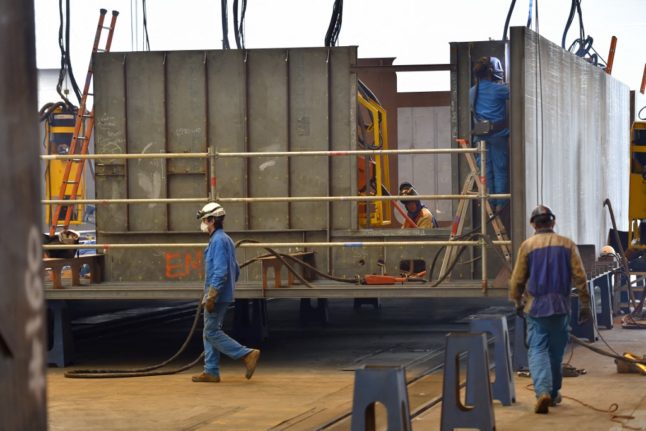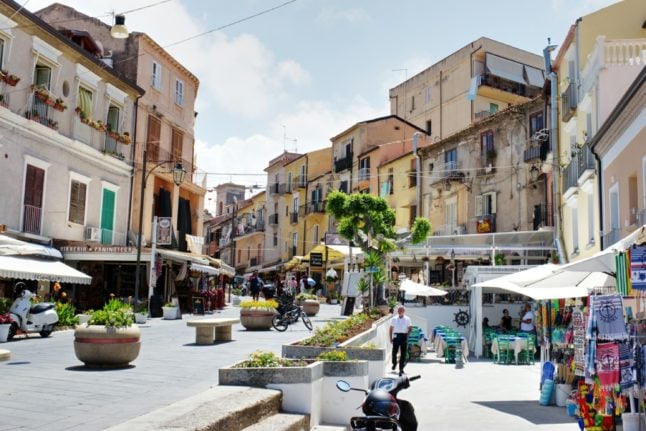Anyone who wants to come to Italy to work from outside the European Union will need to start by getting an Italian work permit – but there’s a lot to know about the process.
Italy offers a limited number of work permits on a changing annual quota, and they’re usually allocated on a first-come-first-served basis, explains Giuditta Petreni, senior immigration consultant at the Mazzeschi law firm.
A total of 136,000 work permits were made available for 2023, and there will be 151,000 available in 2024 and 165,000 in 2025, according to the government’s three-yearly programmazione dei flussi d’ingresso legale (‘planning for legal entry’) decree published at the end of September.
Like the number of permits available, the job sectors open to international workers also vary based on the yearly quota.
“We have quite a few sectors of activities for this year,” says Petreni. “The main areas are agriculture, tourism, building, fishing and plumbing. Domestic workers are also at the top of the agenda, which hasn’t been the case for years.”
READ ALSO: EU Blue Card: Who can get one in Italy and how do you apply?
But anyone interested in taking one of these jobs will need to apply as early as possible, as it takes time to get the work permit and other documents in order.
“The permit is the first step in a long chain” before you’ll be able to work in Italy legally, explains Petreni, who specialises in advising potential workers and their employers on the process behind becoming a legal employee in Italy and has been doing so since 2009.
“A lot of people wrongly assume that just because they have the permit, it makes them legal in the country. This is not true and is the hardest thing for people to understand,” Petreni says.
There are three key documents you’ll need: “The work permit to state your job, the visa to allow entry and exit in and from the country, and the residency permit to state you are able to legally reside in the country and have access to healthcare, etc.”
Another thing to be aware of is that the prospective employer – not the employee – needs to apply for the permit if it is for contracted work.
“That’s one of the main differences between a work visa and a work permit,” continues Petreni.
“The permit is applied for by the employer whereas the visa by the employee.”
What does the application process involve?
This type of permit is called a nulla osta al lavoro subordinato. The employer should apply for it via the interior ministry’s website, and the documents they need to submit include: a copy of the proposed contract, details of suitable accommodation, reasons as to why a foreign worker should take the role, and an annual salary offer that must not be lower than the 8,500-euro minimum set by the government, Petreni says.
The timeline for a decision is up to three months. If the permit application is approved, the employee then has to:
- Apply for a work visa (visto lavoro subordinato) at the Italian embassy/Consulate which has jurisdiction in the place they reside abroad. This type of visa is also known as a D-Visa. They have six months to do this after the permit gets accepted.
- Travel to Italy, within eight days of signing a contract of stay (contratto di soggiorno), together with the employer, at the Sportello Unico per l’Immigrazione that has issued the Nulla Osta (based on the place of work) and apply for a residency permit (permesso di soggiorno).
- Get their fingerprints taken at the police headquarters and then collect their residency permit.
If the contract given by the employer is temporary (contratto determinato) the permit is valid for one year. If the contract is permanent (contratto indeterminato) the permit is valid for two years.
READ ALSO: How to get an Italian work visa
Petreni strongly advises people to apply as soon as they can. Seasonal work permit applications open to employers at 9am on December 12th, whereas applications for permits for longer-term jobs open at 9am on December 2nd.
What about freelancers?
Similar rules apply for those who want a freelance work permit (nulla osta al lavoro autonomo).
However, the initial stages of the process are a bit different: rather than the employer putting in an application for a work permit the self-employed person does it at the police headquarters (questura) in the region of Italy where they intend on working.
Within 90 days of it being accepted, they must go back to their county of residence and get a self-employed visa (visto per lavoro autonomo).
After that, the process is the same as for those who have a work contract.
However, freelance work permits are a lot more difficult to get hold of. Only 500 have been issued this year and it’ll be the same for the next two. At present freelancers would also need to show a minimum annual income of €8,500.
READ ALSO: COMPARED: What salary do you need to get a work permit in Europe?
For all workers coming to Italy there are a lot of documents to obtain, but the total cost “shouldn’t exceed 500 euros,” Petreni says.
“You have two stamps worth €32 together, the visa is €116 and the residence permit is maximum €250.”
What about highly skilled workers?
Skilled workers such as doctors and professors are not included in the decreto flussi quota and can apply at any time when there are shortages in Italy.
These professionals may instead apply for The EU Blue Card, which is not governed by the quota system and so there’s no limit on the number of people who can apply.
To get a Blue Card to work in Italy, you must have at least an undergraduate degree, a job offer, and a salary offer of at least €24,789.
Find out more about the EU Blue Card scheme in a separate article here.
Useful Italian vocabulary:
- Contratto determinato – a fixed-term work contract.
- Contratto di soggiorno – a work permit employment contract.
- Contratto indeterminato – a permanent contract.
- Decreto flussi – the decree governing migration flows in Italy.
- Nulla osta al lavoro autonomo – the work permit for freelancers.
- Nulla osta al lavoro subordinato – the work permit for contracted workers.
- Permesso di soggiorno – Italy’s residency permit.
- Questura – the regional police headquarters.
- Sportello Unico per l’Immigrazione – the questura’s immigration desk.
- Visto lavoro subordinato – a visa for contracted workers.
Please note that The Local is unable to advise on individual cases or assist with job applications.
For more information about work permit and visa applications, see the Italian Foreign Ministry’s visa website, or contact your embassy or local questura (police headquarters) in Italy.



 Please whitelist us to continue reading.
Please whitelist us to continue reading.
Member comments